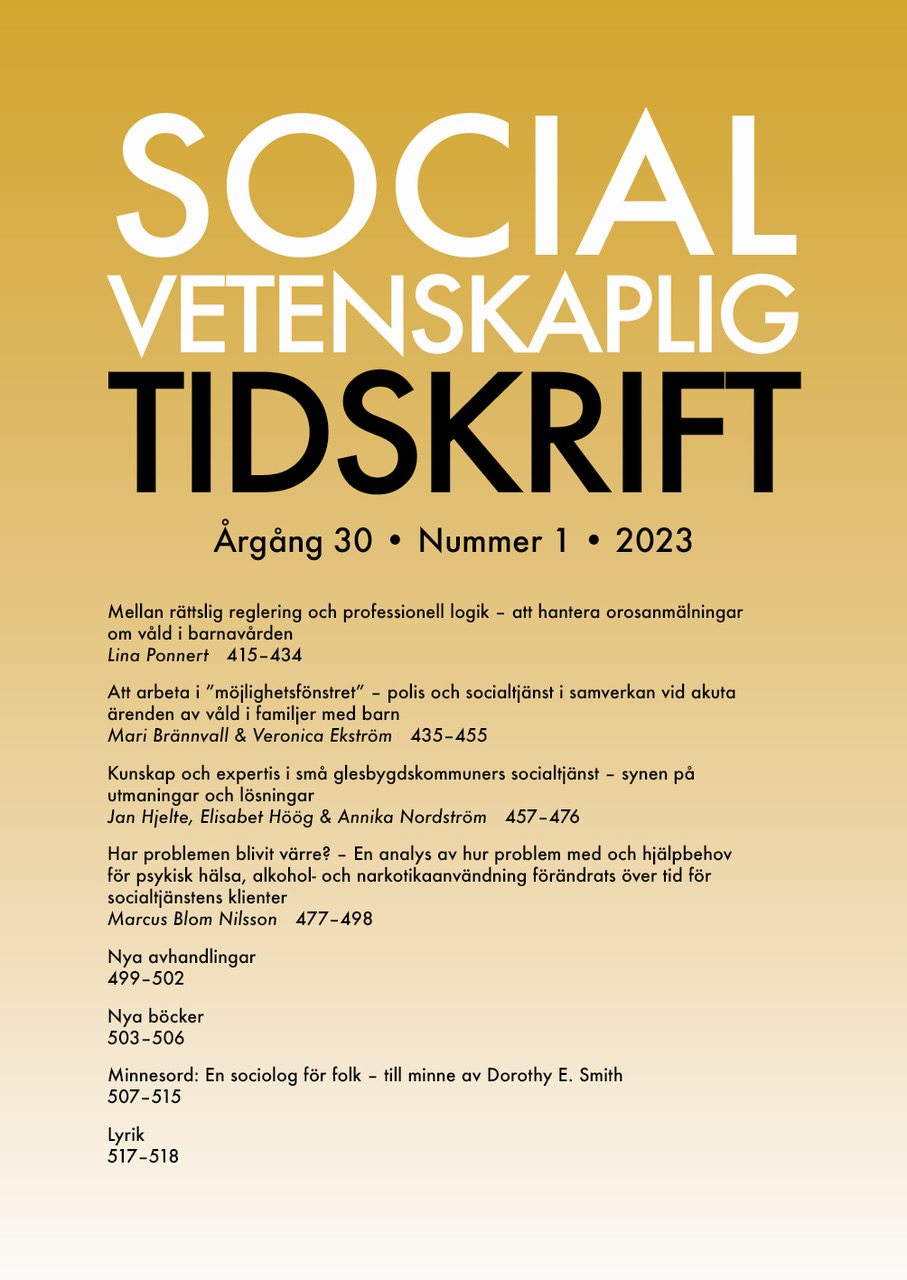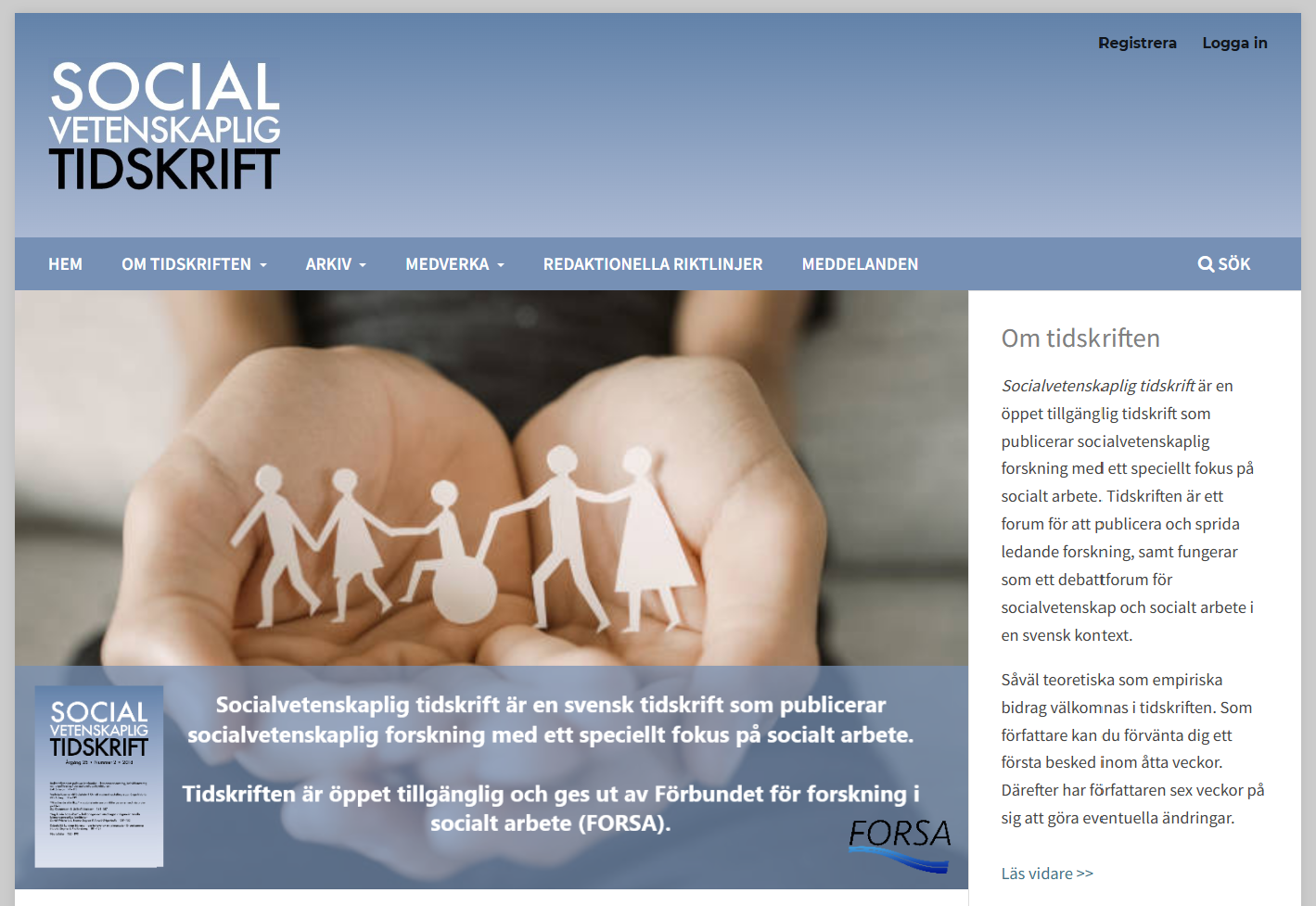Mellan rättslig reglering och professionell logik
– att hantera orosanmälningar om våld i barnavården
DOI:
https://doi.org/10.3384/SVT.2023.30.1.4463Nyckelord:
child protection, referrals, violence, discretion, social worker, legal systemAbstract
Between legal regulations and professional logic - dealing with reports of violence in child protection
This article analyses and discusses social workers’ perspectives on dealing with referrals concerning suspected violence and abuse in child protection within a legal setting guided by mandatory reports and mandatory child welfare investigations when children have been exposed to, or witnessed, violence in close relationships. The study is based on six group interviews with 15 social workers from six different municipalities of varying sizes. The analysis is based on professional theory and theories on discretion, with a focus on how social workers reason about their discretionary space and what strategies they use to cope with possible ethical and legal dilemmas in practice. Three main themes emerged in the analysis: social workers’ strategies within a limited discretionary space, unwarranted referrals, and a low threshold into social services but a high threshold for interventions. The study shows that most social workers consider themselves to have discretion to independently assess information on suspected violence in reports and to assess whether a child welfare investigation ought to be initiated or not. However, they also could feel a need to formally initiate a child investigation, and immediately close it after one meeting, as a strategy to correspond to legal demands. Social workers experienced a risk-oriented approach amongst other professionals, resulting in a mechanical approach to mandatory reporting, where referrals did not necessarily correspond to any actual concern for the child from the reporter. The social worker’s own possibilities to provide interventions was often perceived to be blocked if parents did not give their consent. The study shows and discusses how legal regulations urging professional action in vaguely defined situations must also provide necessary discretionary space for professional assessment to avoid, or cope with, ethical dilemmas related to the legal framework.
Downloads
Publicerad
Referera så här
Nummer
Sektion
Licens
Copyright (c) 2023 Lina Ponnert

Det här verket är licensierat under en Creative Commons Erkännande 4.0 Internationell-licens.
Allt material i Socialvetenskaplig tidskrift publiceras sedan 2022 (Vol 28 Nr 2) med omedelbar öppen tillgång (open access), under Creative Commons-licensen CC BY 4.0. Upphovsrätten till innehållet tillhör respektive författare.
Allt innehåll i tidskriften är fritt tillgängligt utan kostnad och får fritt läsas, laddas ned, kopieras, delas, skrivas ut och länkas. När innehållet används måste författare, källa och licens anges. Författaren kan fritt göra sin publicerade text tillgänglig på institutionella och internetbaserade arkiv, exempelvis sitt lärosätes digitala arkiv eller andra tjänster för detta.
Inga publiceringsavgifter tas ut vid publicering i Socialvetenskaplig tidskrift.


